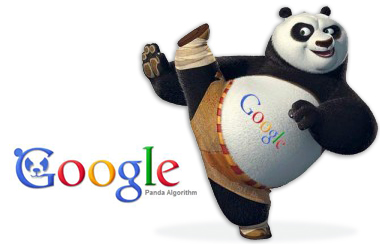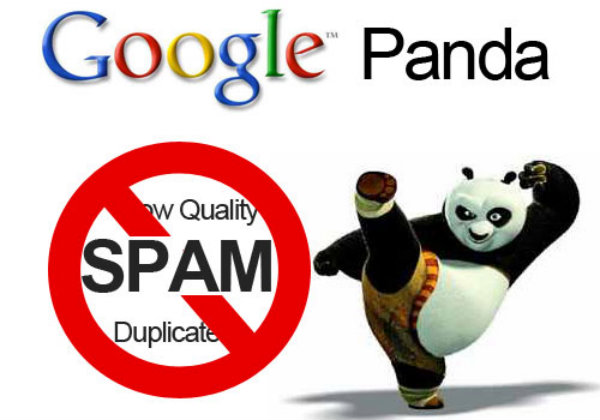Preface
To have a good position in the Google search results, you must optimize the texts of your site. Indeed, Google decides whether site content is important or not (And Google Panda Algorithm does this). But there are sites that copy the texts of other sites and they prepare a very large number of pages to increase the number of visitors, for that Google decides to launch algorithms to filter these sites, it is called the Google Panda algorithm.
Google Panda is one of the Google ranking algorithms launched in February 2011. It is applied on sites to measure its quality and adjust its ranking. When creating an audit of your site, focus on the quality of your content.
What is the Google Panda Algorithm?
Google Panda algorithm first launched on February 23, 2011. The goal of the Google Panda algorithm was to give more content to attractive websites and to reduce the presence of inappropriate sites in search results. This algorithm was known as Farmer in the beginning. According to Google, Panda’s initial launch in the first few months affected 12 percent of search results in English. Between 2011 and 2015, approximately 25 updates have been implemented for this algorithm.

Goals of Google Panda algorithm
The Panda algorithm targets several problematic phenomena in search results. These goals include:
- Very low content: Web pages that have very little relevant content and are very small in terms of text. Like pages that have a variety of topics but very little information in each case.
- Duplicate Content: Copied content is available in many places on the Internet. Content replication can happen even on your site. When you duplicate a specific text on multiple pages, you will probably encounter this problem. For example, a company might create 10 pages with the name of ten cities and repeat its services, in the same way, every ten pages.
- Poor content: Pages that contain very little information about your subject.
- Lack of authorship and credibility: Content produced by sources that do not have validated credentials. Google has emphasized that sites that do not want to be negatively impacted by Panda should strive to increase credibility among users by disseminating useful information.
- Content Farming: High-quality pages that often collect content from other sites. For example, we can refer to websites that collect a lot of pages with topics taken from keywords that are searched in Google and that generate valuable content about it without considering the users’ wishes. Will earn high rankings in search results.
- Improper user-generated content: For example, webpages publish only guest posts that are usually very short. These posts are also generally full of misspellings and lack valuable information.
- Ad-to-Content Ratio: Pages that are full of ads but have no content.
- Poor content around specific links: Poor content created solely to link to a specific site.
- Websites Blocked by Users: Sites that block human users directly in search results.
- Content not relevant to the search term: Pages that provide content that is relevant to the search term, but we come across something else. For example, you may refer to pages that offer restaurant discounts, but upon arrival, you will find that there are no discounts on this page and are filled with ads only.

How do we know we’re fined by Panda?
One of the main signs of Panda being penalized is the sharp drop in traffic on the days when updates to this algorithm are introduced. But keep in mind that many factors can help reduce site traffic. This could be the reason why you have a new competitor ahead of you. Check Google’s penalties for any misunderstandings. Consider seasonal changes as well, as many of these changes affect site sales and traffic. Sometimes other updates may also cause traffic to your site.
When reading the latest Google updates, be sure to read the details to make sure your site is safe concerning the issues that are contained in these updates. If you are likely to experience a reduction in traffic after a certain update and you are certain that this is due to your failure, please solve the problem and ask Google for forgiveness.

How to get rid of Panda fines?
In the SEO industry, it is often said that it is very difficult to get rid of a Panda. However, the main problem with Panda is the content of your site, and fixing this problem on your site pages can be a first step in getting rid of Panda. Do the following to get a Google grant:
- Ban on content farm creation
- Overhaul website content and create useful and engaging content
- Overview of how many ads and number of links a page has
- Make sure the content is relevant to the search term
- Remove duplicate content from the site
- Evaluate and edit content provided by site users
- Use Navindex and Nofollow to block search engine access to duplicate in-site content
On the whole, sites that always publish quality and original content should have no fear of such updates. But if you have problems with your website somewhere, you may be subject to a Panda fine. Practically speaking, the best way to prevent Panda from being penalized is to develop your brand to be recognized as a reputable site by users and search engines. To achieve this you need to be recognized as a resource in your field by producing quality content.
Other facts about the Panda algorithm
- Panda was initially released as a separate update, but later in March 2012, it became part of the core of Google’s algorithm.
- Panda was named after a senior Google employee named Navneet Panda.
Conclusion
If you’ve been penalized by Google Panda algorithm, here are some recommendations that will help you improve your site’s positioning in search results again.
Start by thoroughly checking for any indexing issues that may exist on your site. You must deindex pages that display duplicate content or low-quality content. These changes will encourage Google’s crawlers to crawl your site.
Think about creating quality content, with interesting information, without over-optimization and by applying a suitable editorial strategy. Feel free to delete pages with poor quality content. Remember to remove all forms of black hat techniques such as content farms, scraping, cloaking, etc.
Improve the user experience by reducing the loading time of web pages, providing interesting information, and more. Avoid displaying many ads in the body of your content. Instead, place them in the spaces below, to the left, or to the right of your items.
In general, when you have made these changes and corrections, you must get results the following month. Finally, do not forget to refer to the Google Guidelines not to be penalized. Be sure to improve your site’s traffic without cheating: so, if other algorithms are created, you will not be exposed to possible penalties.

